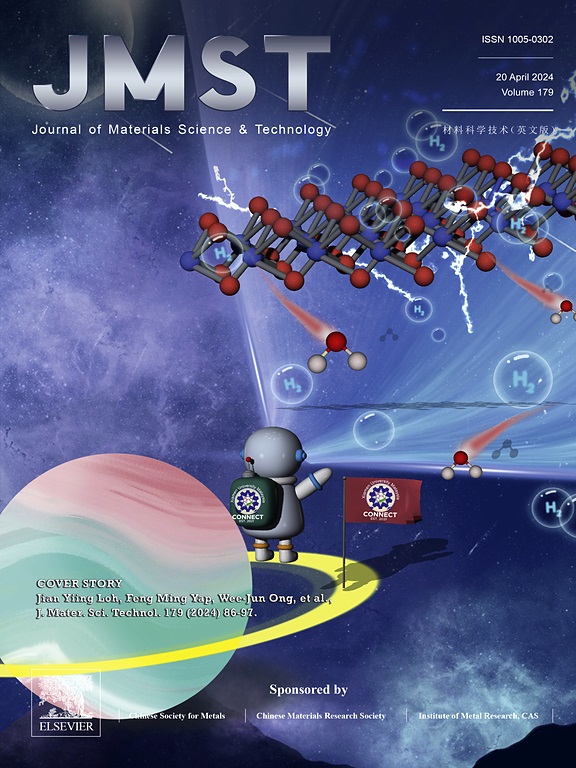Enhanced electrocatalytic reduction of nitrate to ammonia via anchoring CuNi alloy on oxygen vacancy-rich N-Ti3C2Tx
IF 11.2
1区 材料科学
Q1 MATERIALS SCIENCE, MULTIDISCIPLINARY
引用次数: 0
Abstract
Modulating the adsorption energy of intermediate species via alloying presents a promising approach to enhance the electrocatalytic nitrate reduction to ammonia (NRA). Nonetheless, the synthesis of alloy catalysts that are uniformly distributed and structurally stable poses significant challenges. Herein, the CuNi alloy was successfully anchored on oxygen vacancy-rich N-Ti3C2Tx through metal-support interactions (MSI). The three-dimensional (3D) wrinkled morphology of N-Ti3C2Tx MXene was achieved by employing melamine-formaldehyde spheres (MFs) as self-sacrificial templates, which effectively prevented the restacking of the Ti3C2Tx layers, thereby increasing specific surface area and promoting the formation of surface oxygen vacancies. Ti–O–M structure plays a crucial role in inhibiting both particle migration and metal atom diffusion. X-ray photoelectron spectroscopy (XPS) analysis confirms moderate metal-support interactions between the CuNi alloy and N-Ti3C2Tx, leading to the establishment of stable Ti–O–M bonds and charge redistribution within the Ti-O-M framework. The Cu5Ni5/N-Ti3C2Tx sample achieves an impressive Faradaic efficiency (FE) of 97.50% at −0.27 V vs. RHE, alongside the highest NH3 yield rate of 527.44 μmol h−1 cm−2. In-situ electrochemical Raman spectroscopy and theoretical calculations reveal that the high intrinsic catalytic activity of NRA can be attributed to the synergistic effects between the CuNi alloy and the interfacial metal-oxygen interactions. This work provides significant perspectives on the design of interfacial metal interactions and the development of durable electrocatalysts.

求助全文
约1分钟内获得全文
求助全文
来源期刊

Journal of Materials Science & Technology
工程技术-材料科学:综合
CiteScore
20.00
自引率
11.00%
发文量
995
审稿时长
13 days
期刊介绍:
Journal of Materials Science & Technology strives to promote global collaboration in the field of materials science and technology. It primarily publishes original research papers, invited review articles, letters, research notes, and summaries of scientific achievements. The journal covers a wide range of materials science and technology topics, including metallic materials, inorganic nonmetallic materials, and composite materials.
 求助内容:
求助内容: 应助结果提醒方式:
应助结果提醒方式:


